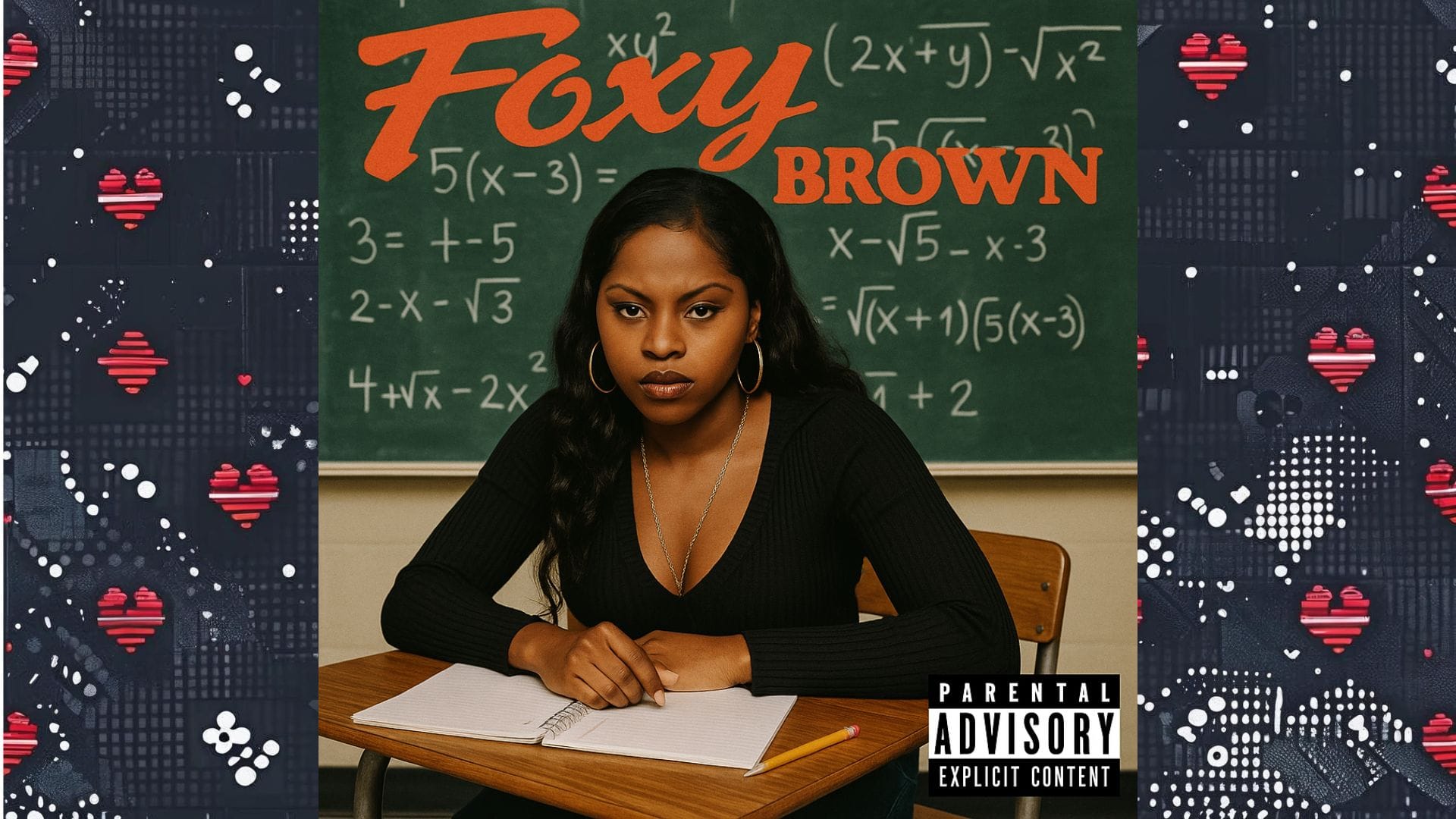Foxy Brown’s Math Was Right: Reframing Affirmative Action in 2025

Hip-hop lore often reduced Foxy Brown’s legendary “Affirmative Action” verse to a punchline. Critics claimed she couldn’t count, framing her bars as an embarrassing slip.1 But in 2025, with decades of hindsight and a deeper understanding of street mechanics, sexuality as leverage, and feminist theory, we can see the truth: her math was not a mistake. It was a coded ledger of plays, delivered through the persona of a young woman who understood that erotic capital, financial capital, and lyrical intellect could all be wielded together. Foxy embodied MoneySexNerd before we had the language for it.
Why the Math Works When You Reapply PEMDAS Correctly
The joke always hinged on the schoolbook rule of PEMDAS (Parentheses, Exponents, Multiplication, Division, Addition, Subtraction)2 — the standard order of operations in algebra. Critics mocked Foxy because, when you apply PEMDAS literally, the arithmetic seemed off. But Foxy wasn’t writing equations for a classroom. She was narrating the mechanics of the underworld, where money moves through runners, overhead, and splits.3 In that world, the logic is situational, not sequential. When you reframe the verse through that lens, the bars hold up as a coded ledger — and as sexual bravado. “I can talk ki math on a Nas record and make it sound sexy” was the flex.
The Verse as a Ledger of the Streets
“Ki’s is one and two-fifth, so how we flip? / 32 grams raw, chop it in half, get 16, double it, times 3 / We got 48 … divide the profit by 4, subtract it by 8, we back to 16 … now add the other 2 that ’Mega bringin’ through … plus a 500, cut in half is 250 / now triple that — times 3, we got three-quarters of another ki.”
When Foxy says “double it, times 3,” she is not misapplying multiplication. She is describing three runners working parallel doubles — 16 turned into 32 across three lanes.4 The declared number of 48 reflects the liquid, claimable product after splits and overhead. “Divide the profit by 4” signals a crew split, while “subtract it by 8” names the costs of operation — security, drivers, stash spots, taxes to the plug, even losses and emergencies.5 Returning “back to 16” represents replenished seed capital. And when she closes with the ki couplet, the math is airtight: 500 grams cut into 250, multiplied across three stretches, produces 750 grams, exactly three-quarters of a kilo.6 Read as a ledger, the bars work. Read as erotic performance, the bars are even sharper — Foxy demonstrating she can make raw arithmetic sound alluring, a femme fatale narrating the economics of cocaine.
Career Receipts: From Nas Feature to Platinum Solo Run
To understand the impact of Foxy’s verse, you have to place it in time. “Affirmative Action” dropped in 1996 on Nas’s It Was Written, a generational album that redefined mafioso rap.7 Foxy’s feature was not a throwaway — it was her breakout on one of the most important hip-hop albums of the decade. Sharing a verse with Nas, AZ, and Cormega gave her instant credibility.8 Her lyrical math carried sexual undertones: the teenage femme rapper holding her own while all the men around her treated drug talk as masculine territory. That inversion of expectation was part of her power.
The buzz translated directly into capital. Trackmasters discovery, Violator management, and Def Jam checks followed.9 At just 17, she dropped Ill Na Na (1996), a platinum debut fronted by “I’ll Be,” a duet with Jay-Z dripping with erotic play and commercial appeal. By 1997, she was co-anchoring The Firm with Nas, AZ, and Dr. Dre — a supergroup debuting at #1.10 In 1999, Chyna Doll made history as the first female rap LP to debut at #1 on the Billboard 200, powered as much by Foxy’s sexualized image as by her lyrical authority.11 Later, Jay-Z re-signed her under his Def Jam presidency, showing that even the most powerful men in the business recognized her as an asset.
The Underworld Placement: Sexuality in Supreme’s Orbit
Foxy wasn’t just adjacent to power; she was embedded in it. Violator managed her career, the same powerhouse later steering 50 Cent. By the late ’90s, Murder Inc was dominating with Ja Rule and Ashanti, under the shadow of Supreme McGriff.12 The feds were watching everything.13 Foxy’s world overlapped directly. But her placement was unique: she wasn’t just the pretty face in the room. She turned her sexuality into armor, into economic leverage, into a power card that made men underestimate her only once. By the time they realized, she was already platinum and in their ledgers.
The Source as Patriarchy in Print
The “Foxy can’t count” meme calcified because The Source amplified it in its 100th issue.14 But this wasn’t math critique; it was patriarchy disciplining the divine feminine. A male-run magazine mocked a teenage Black woman who was openly monetizing her body and bars at the same time. The joke became cultural shorthand, but in hindsight it’s clear: this was an attempt to diminish a woman who was already flipping sexuality into capital, and capital into power.15
The 2025 Intersectional Read: Money, Sex, and Nerd Power
Seen from 2025, Foxy Brown is a perfect MoneySexNerd case study. Money: she leveraged a Nas feature into a bidding war and platinum sales. Sex: she weaponized erotic power, using hyper-sexual branding like *Ill Na Na* not as submission but as leverage. Nerd: her so-called math mistake was actually a coded economic formula, misunderstood only by those applying PEMDAS instead of street mechanics. Foxy was anti-victim, anti-patriarchy, and unapologetically strategic. That’s Black girl magic in practice.
Think Layla Martin’s tantric teachings about shakti energy and orgasmic manifestation16 — Foxy embodied those principles in rhyme form, proving feminine sexuality could be both sacred and profitable. And if you need the Aubrey Marcus reference for synchronicity: his psychedelic warrior ethos of turning sex, spirit, and hustle into lifestyle branding is what Foxy did decades earlier. She lived the archetype before it had a podcast.17
MSN Verdict: Foxy Brown as MoneySexNerd Archetype
Foxy Brown’s “Affirmative Action” verse deserves to be remembered as both a coded ops manual and a feminist power move. She was not just rapping about ki math — she was eroticizing it, monetizing it, and leveraging it into platinum records. Her career proves she capitalized on her sexuality, turned it into industry respect, and left receipts on the charts. The Source’s joke was patriarchy; the reality was a teenage Black woman mastering the alchemy of money, sex, and nerd logic. In 2025, we call that what it is: pure MoneySexNerd energy.
References
| 1 | Hip-hop lore framing Foxy’s “Affirmative Action” verse as failed math, widely circulated since the late 1990s. | Genius Lyrics |
| 2 | PEMDAS definition: the standard order of operations in algebra. | Cuemath |
| 3 | Jay-Z lyric on “mechanics of the underworld.” | New Yorker |
| 4 | Street interpretations of Foxy’s “double it, times 3” line. | Reddit: TheyDidTheMath |
| 5 | Overhead costs in drug operations — security, stash spots, transportation, and taxes to suppliers. | HipHopDX |
| 6 | Dimensional math of Foxy’s kilo couplet — 500 grams re-rocked into 750 grams (¾ kilo). | Revolt |
| 7 | Nas’s It Was Written as a generational mafioso rap album. | Wikipedia |
| 8 | Credibility Foxy gained by sharing space with Nas, AZ, and Cormega. | Billboard |
| 9 | Violator management under Chris Lighty and Mona Scott guiding Foxy Brown’s career. | uDiscover Music |
| 10 | The Firm’s #1 Billboard debut as proof of Foxy’s institutional respect. | LA Times |
| 11 | Chyna Doll as the first female rap LP to debut at #1 on the Billboard 200. | Billboard |
| 12 | Violator’s later management of 50 Cent and other crossover successes. | NYT |
| 13 | Federal raids and investigations into Murder Inc and Supreme McGriff. | DOJ |
| 14 | The Source’s 100th issue coverage of Foxy’s verse as a failed math bar. | Okayplayer |
| 15 | Benzino-era editorial meddling reducing the credibility of The Source. | MTV |
| 16 | Layla Martin’s tantric and shakti-based teachings on feminine power. | Layla Martin |
| 17 | Aubrey Marcus’s archetype of warrior-spirituality and polyamory podcast culture. | Aubrey Marcus |



